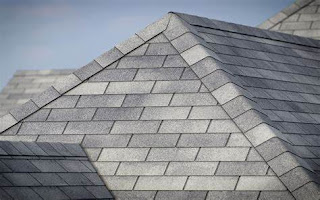When it comes to building a shed, choosing the right roofing material is crucial for ensuring the shed's durability, functionality, and aesthetics. The roof is the first line of defense against the elements, and it plays a significant role in protecting the shed's contents and maintaining its structural integrity. In this article, we will explore different roofing material options for your 8x10 lean-to shed, discussing their features, benefits, and installation considerations.
1. Asphalt Shingles:
Asphalt shingles are a popular and cost-effective roofing material for sheds. They are easy to install and come in a variety of colors and styles, allowing you to customize the look of your shed. Asphalt shingles are durable and can withstand various weather conditions, making them a practical choice for sheds in most regions. They also provide good insulation, which can help regulate the temperature inside the shed. Asphalt shingles are typically installed using nails or staples and require proper underlayment for moisture protection. They can last for 15-30 years, depending on the quality of the shingles and the local climate.
2. Metal Roofing:
Metal roofing is another popular option for shed roofs. It is durable, long-lasting, and low-maintenance, making it an excellent choice for sheds that require minimal upkeep. Metal roofs are available in various styles, including corrugated, standing seam, and ribbed, providing a sleek and modern look to your shed. Metal roofs are resistant to fire, rot, and insects, making them a durable and reliable option for sheds in all types of climates. They are typically installed with screws or clips, providing excellent stability and wind resistance. Metal roofing can last for 40-70 years, depending on the type of metal and the quality of the installation.
3. Wood Shingles or Shakes:
Wood shingles or shakes can provide a rustic and natural look to your shed, blending well with the surrounding environment. Wood roofing is typically made from cedar, redwood, or other durable wood species that are naturally resistant to decay and insects. Wood shingles or shakes are usually installed in an overlapping pattern, providing excellent water shedding capabilities. They require proper ventilation and maintenance, including regular staining or sealing, to ensure their longevity and prevent rot or decay. Wood shingles or shakes can last for 25-50 years, depending on the quality of the wood and the level of maintenance.
4. Corrugated Plastic or PVC Sheets:
Corrugated plastic or PVC sheets are lightweight, affordable, and easy to install, making them a popular choice for sheds with low budgets or time constraints. They are available in various colors and styles, providing options for customization. Corrugated plastic or PVC sheets are resistant to rot, insects, and UV rays, making them a durable option for sheds in most climates. They are typically installed with screws or nails, and proper sealing is required to prevent water leakage. Corrugated plastic or PVC sheets can last for 10-20 years, depending on the quality of the material and the installation.
5. Polycarbonate Sheets:
Polycarbonate sheets are another lightweight and durable roofing material option for sheds. They are made from a strong and flexible plastic material that is resistant to impact, UV rays, and weathering. Polycarbonate sheets are typically available in clear or translucent styles, allowing natural light to enter the shed, which can be beneficial if the shed is used as a workspace or storage for plants. They are easy to install and can be cut to fit any shed size or shape. Polycarbonate sheets are typically installed with screws or clips and require proper sealing to prevent water leakage. They are a long-lasting option, with a lifespan of 20-30 years or more, depending on the quality of the material and the installation.
6. Green Roof:
A green roof, also known as a living roof, is a unique and eco-friendly option for shed roofing. It involves covering the roof with a layer of vegetation, creating a living, growing roof that provides insulation, reduces stormwater runoff, and promotes biodiversity. Green roofs can be installed on flat or sloped shed roofs and typically require a waterproofing membrane, drainage layer, and growing medium for the vegetation. The type of vegetation and maintenance requirements will depend on the local climate and the desired aesthetic. Green roofs can last for 30-50 years or more, depending on the quality of the installation and maintenance.
7. Thatched Roof:
A thatched roof is a traditional and charming option for shed roofing that can provide a rustic and cozy look to your shed. Thatched roofs are made from bundles of dried vegetation, such as straw, reeds, or heather, that are layered and tied to a roof structure. Thatched roofs are known for their excellent insulation properties, providing natural ventilation and heat retention. They are also durable and can withstand various weather conditions. However, thatched roofs require regular maintenance, including re-thatching every few years, to ensure their longevity and prevent decay or pests. Thatched roofs can last for 20-50 years or more, depending on the quality of the thatching material and the level of maintenance.
Conclusion
When it comes to choosing the right roofing material for your 8x10 lean-to shed, there are various options to consider, each with its features, benefits, and installation considerations. Asphalt shingles, metal roofing, wood shingles or shakes, corrugated plastic or PVC sheets, polycarbonate sheets, green roofs, and thatched roofs are some of the popular choices available. Consider factors such as durability, maintenance requirements, aesthetics, and budget when making your decision. It is also important to ensure proper installation and sealing to prevent water leakage and ensure the longevity of the roof. With the right roofing material, your 8x10 lean-to shed will not only provide functional storage space but also enhance the overall appearance and value of your property.
Remember to always consult local building codes, regulations, and manufacturer's instructions for proper installation and maintenance of your chosen roofing material. Happy building!

0 comments:
Post a Comment
Note: Only a member of this blog may post a comment.